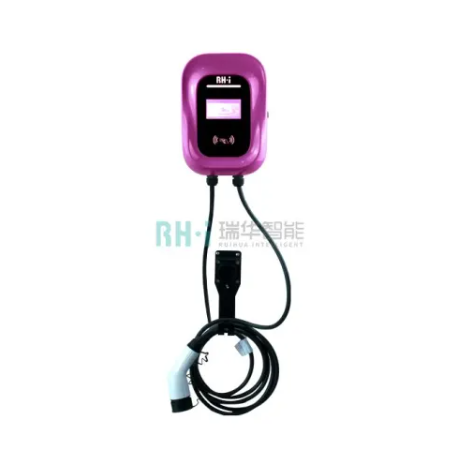With the increasing popularity of electric vehicles (EVs), understanding the nuances of charging methods is essential for EV owners and enthusiasts. One significant aspect to consider is the difference between single-phase and three-phase charging systems.

Single-Phase Charging:
Single-phase charging is a standard charging method used in residential and light commercial settings. In this system, electric power is delivered through a single alternating current (AC) waveform, commonly referred to as 120V or 240V in North America and 230V in Europe and other regions. Single-phase charging stations typically utilize a Level 1 or Level 2 charger, with Level 1 chargers operating at 120V and Level 2 chargers operating at 240V.
Advantages of Single-Phase Charging:
Widely Available: Single-phase charging infrastructure is readily available in residential areas and light commercial settings, making it convenient for EV owners to charge their vehicles at home or work.
Cost-Effective: Level 1 charging stations require minimal installation costs, as they can utilize existing household electrical outlets. Level 2 charging stations may require additional electrical upgrades but are still relatively affordable compared to three-phase systems.
Suitable for Low-Power Applications: Single-phase charging is sufficient for charging small to mid-sized EV batteries overnight or during extended periods of parking, making it suitable for daily commuting and short-distance travel.
Limitations of Single-Phase Charging:
Slower Charging Speeds: Single-phase charging systems typically offer slower charging speeds compared to three-phase systems, especially for EVs with larger battery capacities. This can result in longer charging times, which may be inconvenient for drivers with higher mileage requirements.
Limited Power Capacity: Single-phase charging stations have limited power capacity due to the constraints of single-phase electrical grids. This can lead to increased demand charges for commercial users and may necessitate upgrades to the electrical infrastructure for higher-powered charging stations.
See also:
Energy
How Wall-Mounted Charging Piles Promote Sustainable Transportation?LiFePO4 vs. Other Lithium Batteries: Why 100Ah Cells Stand Out22kW Three-Phase EV Charging - Is It Worth It?What is a lithium battery used for?What are the disadvantages of a 3-phase inverter?How do I choose a home EV charger? | FLOThree-Phase Charging:
Three-phase charging is a high-power charging method commonly used in commercial, industrial, and public charging infrastructure. In this system, electric power is delivered through three alternating current (AC) waveforms, providing higher power capacity compared to single-phase systems. Three-phase charging stations typically utilize Level 3 DC fast chargers, which can deliver significantly faster charging speeds.
Advantages of Three-Phase Charging:
Faster Charging Speeds: Three-phase charging systems offer significantly faster charging speeds compared to single-phase systems, enabling EVs to recharge their batteries quickly, often in less than an hour.
High Power Capacity: Three-phase charging stations can deliver higher power capacity, allowing multiple EVs to charge simultaneously at high power levels. This makes them ideal for high-traffic locations such as highway rest stops, shopping centers, and urban areas.
Scalability: Three-phase charging infrastructure is scalable and can accommodate future increases in EV adoption and demand. As EV technology evolves and battery capacities increase, three-phase charging systems can support higher-powered chargers and faster charging speeds.
Limitations of Three-Phase Charging:
Infrastructure Costs: Three-phase charging infrastructure requires significant upfront investment in electrical equipment, including transformers, switchgear, and distribution panels. Additionally, installation costs may be higher due to the need for specialized equipment and electrical upgrades.
Limited Availability: Three-phase charging stations are less common in residential areas and may be limited to specific locations with access to three-phase electrical grids. This can pose challenges for EV owners who rely on public charging infrastructure for long-distance travel.
Single-phase and three-phase charging systems offer distinct advantages and limitations, catering to different user needs and charging scenarios. While single-phase charging is suitable for residential and light commercial applications, three-phase charging provides faster charging speeds and higher power capacity, making it ideal for commercial, industrial, and public charging infrastructure. As EV technology continues to evolve and adoption rates increase, both single-phase and three-phase charging systems will play important roles in shaping the future of electric mobility.
Related articles:What is an AC and DC charger?How Does an Industrial Odor Eliminator Machine Work?How to Select the Right Crossflow Cooling Tower?How to Choose the Best FRP Cooling Tower for Your Needs?Lithium-Ion Battery Energy Storage Systems (BESS) RisksFRP Cable Tray Types and Its Applications4 Tips to Select the Perfect FRP Manhole Cover





Comments
0Related Articles
By Hou
59
0
0
By Geym
59
0
0
By Liang
45
0
0
By Fabricio
45
0
0
By Geym
47
0
0
By Evelyn y
41
0
0
By Sam
34
0
0
By Friday
31
0
0